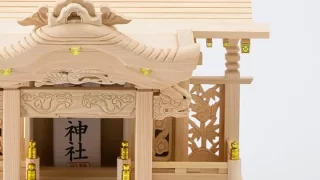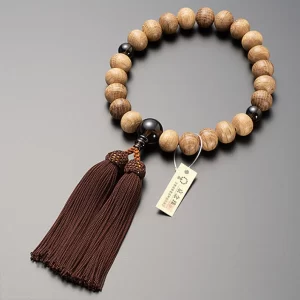Sakazuki (Sake cup) history
In Japan, "Shuhai = Sakazuki (Sake cup)" is used in various occasions such as Shinto rituals and celebrations.
"Shuhai = Sakazuki (Sake cup)" is a dish-shaped vessel used when drinking sake, and is also called "Sakazuki (Sake cup)".
Actually, there are various types of sake cups such as "Ochoko (Sake cup)" and "Guinomi (Sake cup)" for drinking sake.
"Ochoko (Sake cup)" and "Guinomi (Sake cup)" are generally Sake cups with a wide opening and a concave bottom.
"Sakazuki (Sake cup)" is shaped like a flat plate with a small cylindrical pedestal at the bottom.
“Sakazuki (Sake cup)” plays an important role in Japanese culture and tradition. It is used not only for drinking sake on New Year's Day, but also for drinking sake during Shinto rituals and festivals, and as a ceremonial cup given to winners of competitions such as the Emperor and members of the imperial family and to recipients of medals and medals. increase.
Contents
“Sakazuki (Sake cup)” has a long history
The notation "Sakazuki (Sake cup)" has also been used in Japan for a long time. The contents of the book compiled around 900 are summarized. You can see the notation "Sakazuki (Sake cup)" there.
However, this ``Shuhai = Sakazuki (Sake cup)'' is said to refer to an unglazed pottery called ``Sueki'', unlike the modern one.
Also, at that time, it is said that a vessel called "tsuki" was used for various foods and drinks, and it seems that there was no distinction between sake, rice, and soup.
In the Muromachi period (1336 – 1573), lacquerware developed, and tableware came to be classified according to its purpose, such as plates, bowls, and Shuhai = Sakazuki (Sake cup). Then, beautiful lacquered Shuhai = Sakazuki (Sake cup) appeared, and the custom of exchanging Shuhai = Sakazuki (Sake cup) developed in samurai society.
The culture of exchanging "Shuhai = Sakazuki (Sake cup)" has existed since ancient times
Traditional ceremony using "Shuhai = Sakazuki (Sake cup)"
"Shuhai = Sakazuki (Sake cup)" itself has been used for a long time, but in Japan there are many rituals related to sake using this "Shuhai = Sakazuki (Sake cup)".
Naorai, an ancient Shinto ritual, is a ritual in which all participants receive the food and sake offered at the end of the ritual. By sharing offerings to the gods, it has the meaning of sharing power, and today it is seen at groundbreaking ceremonies and ridge-raising ceremonies.
Also, "Shikisankon", which was established in samurai society from the Middle Ages to the early modern period, is a Japanese ceremonial drinking party etiquette.
A set of appetizers and a large, medium, and small cup of sake are treated as one serving, and a total of three servings are repeated to entertain guests.
It is a common rule to drink the sake that is served at this time, just put it in your mouth for the first and second sips, and drink it up after the third sip.
Based on this ``Shikisankon,'' the ``Sansankudo'' ceremony involves drinking three sips of sake, which is poured in three portions, and is repeated three times. done in a formula.
History of “Kanpai”
In this way, while Japan has traditional rituals and etiquette related to sake that have been handed down from ancient times, it is said that "toasting" is a relatively new custom.
There are various theories about the specific origin of Kanpai'', but it is believed that the custom ofKanpai'' was introduced into Japan at the end of the Edo period, and as Western culture spread in the Meiji era, the gesture of ``Kanpai'' became widespread. .
In addition, the shout when raising Shuhai = Sakazuki (Sake cup) used to be the word "banzai", which meant to praise the emperor. It is said that around the end of the Meiji period, the word kanpai came to be used as a general word for celebratory toasts.
Points for choosing sake cups such as "Sake Cup"
The taste of sake can change depending on the size and shape of the sake cup.
When drinking sake at home, there are various options for sake cups such as "Shuhai = Sakazuki (Sake cup)", "Ochoko (Sake cup)" and "Guinomi (Sake cup)". Depending on the size and shape of the sake cup, the taste of sake may be felt differently, so please choose the one that best suits your taste.
【capacity】
It takes a long time to drink from a large sake cup, so if you drink slowly, the temperature will change. If you want to enjoy cold or hot sake before the temperature changes, choose a smaller Sake Cup.
[Diameter/Shape]
Depending on the size and shape of the mouth of the sake cup, the surface area where the sake is exposed to the air will change, so the aroma will be different.
A trumpet-shaped sake cup with a wide caliber spreads the aroma easily, so it is suitable for refreshing sake. A bud-shaped sake cup with a narrow caliber and a bulging bottom makes it difficult for the scent to escape, so it is suitable for fragrant sake and hot sake.
【angle】
Depending on the angle of the sake cup, the taste of sake changes.
Shuhai = Sakazuki (Sake cup), which is shaped like a trumpet and has an angle, makes the sake flow quickly into the mouth and hits the part of the tongue that feels sour and bitter, making it easy to feel dry.
Sake cups such as the Guinomi (Sake cup) that are straight and have no angles allow the sake to flow slowly into the mouth and hit the front of the tongue where the sweetness is first felt, making it easier to feel sweet.
Let's be particular about the material when choosing "Sake Cup"
Sake cups such as “Sake Cup” differ in the way they convey the taste and temperature depending on the material. When choosing a sake cup, you want to be particular about the material.
[Glass]
Glass sake cups have a cool appearance.
In the case of glass, there are various thicknesses.
Thick sake cups are well suited for sake with a rich taste, such as pure rice sake.
The glass sake cup is suitable for cold sake.
[Ceramic]
There are various types of sake cups made of ceramics, from affordable ones to expensive ones.
Sake cups made of ceramics have heat retention and are attractive because they go well with any kind of sake.
[Pinware]
Sake cups made of tin are also popular as sake cups. Not only is it a metal material that is resistant to rust, but it is also said to make the taste of sake milder.
【lacquerware】
Lacquer sake cups are often used in formal occasions such as New Year's sake. There is an image that it is not common as a sake cup for everyday use, but it has the advantage of being hard to break and having excellent heat insulation. In addition, it is attractive that taste comes out in appearance while using it.





